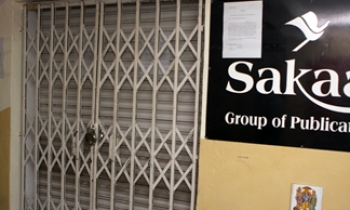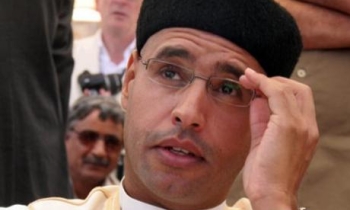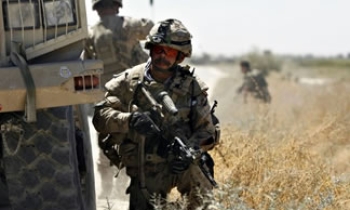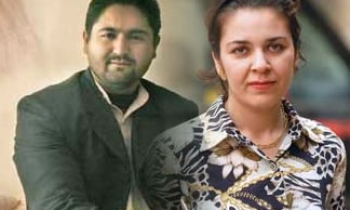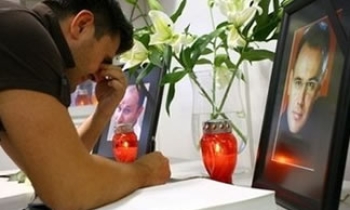The Internet offers a broad creative canvas to advertisers. You can mix audio, video, text to engage users in highly interactive ways. So, what are the creative trends emerging in the Indian cyberscape? Does Flash rule or is the good old banner still holding the fort? Is the increasingly availability of bandwidth reason enough to adopt richer media? What creative strategies deliver the best results?
It certainly isn't static
It's a landscape that's constantly changing. Says Preeti Desai, president, Internet and Mobile Association of India (IAMAI): "There is a shift from advertisers' previous communication strategies, which often treated banner ads as miniature billboards with "click here" added to lure users to Internet sites. Advertisers are turning their Web ad units into mini-websites, allowing Internet users to watch video clips, flash communications, take quizzes, sign-ups and request more information - all without going to the advertiser's website."
Preeti believes that advertisers must leverage the possibilities of the medium. "It's possible to not only effectively communicate the campaign message to a specific target audience but also to hand hold the consumer and enable an "actual" sale," she says. "Consumers can get information and make purchases and payments all through the Internet. No other medium can accomplish these marketing functions instantly, without resorting to other means. The creative usually can deliver an "extensive" two-way dialog which would give any marketer "important" consumer insights especially if customised to customer needs."
MSN India sales and marketing head Rajnish R agrees that the creative space in online advertising has changed over the last couple of years. "The banner ad has changed from a static image to one that has a lot of animation and graphics. There is a lot of rich media absorption these days, all in the name of enriching the user experience and getting greater recall."
According to Carlton D'Silva, creative director of Virtual Marketing India Pvt Ltd, which operates Hungama.com, the introduction of rich media banners has made it possible for the advertiser to disseminate more information to the end user, while keeping the banner size under control. "Rich media banners also enable advertisers to grab the user's attention through mouse-over actions, thus breaking the clutter of multiple advertisements on a single page," he adds.
But apart from more rich media and Flash in the banner, S N Bhaduri, vice-president (e-business) at HT Media Ltd, feels that the creative landscape remains more or less the same. "From an ideation point of view, the creative departments of ad agencies are still not giving it the importance that is due," he says.
Adds Vibhas M, group partner relations manager at People Interactive (I) Pvt Ltd, which operates Shaadi.com: "While we have graduated from simple GIF ads to Flash, a majority of Indian users are still on dial-up connections, and hence video and streaming etc are still not being used."
Bye-bye to the banner?
Will rich media mean the extinction of the traditional banner ad? According to Indiatimes.com online advertising head Rohit Sharma, while there's much more creativity in communication in terms of shoskeles, rich media, banner sizes and even copywriting, traditional banner ads will continue to be used since they deliver better click-throughs worldwide.
"Multiple formats will continue to coexist, starting from text link to rich media. If you have a simple, strong proposition to sell, then GIF/JPEGs are equally powerful," says Tushar Vyas, national director of mOne (Group M Media Pvt Ltd). "It's still one of the most successful ROI-driven advertising options," he says.
Hungama.com's D'Silva says that the traditional banner ad will soon be history. Rich media banners, he feels, have the ability to grab the attention of the consumer more effectively than the traditional banner. "The only reason that the traditional banner is still surviving is because there are quite a few websites that still do not serve rich media banners," he adds.
The creative is willing, but�
Rich media takes up a lot of bandwidth, and this could a limiting factor for most advertisers. Rajnish admits as much. "While bandwidth in India has significantly improved over the last 10 years, it's still to reach the level where heavy creatives, can be loaded with ease," he says.
Some advertisers are trying to find ways of getting around the bandwidth problem. Says Tushar Vyas: "We have been attempting to make different creatives for broadband and dial-up users. Separate sets of creatives run on websites accessed through cyber cafe and broadband connections," he says.
HT Media's Bhaduri strikes an optimistic note: bandwidth will no longer remain an area of concern a year from now, he says.
Looking beyond contests
Brand-building campaigns on the Internet are usually driven by contests and promotions, apart from the regular ads. Rajnish believes that there's a shift in building a brand online. "This is primarily because of the medium's ability to be flexible and incorporate the audio-visual aspect into its offerings. This ability to be flexible as well as the host of tools available online increases the creative's ability to build a brand," he says. Rohit Sharma says large advertisers from key verticals like finance, IT and telecom are not doing promotions and contests but a lot of brand/ action-oriented campaigns.
"The online space is a 'what's in it for me' medium, hence one sees a lot of promotion-based advertising online," says Hungama.com's Carlton D'Silva. But he too believes that's changing, and a lot of brands - like Airtel and Cadburys - are carrying forward the same brand message online from their offline advertising. Since these campaigns are not conceptualised for the Internet, the challenge is to make that advertising interactive.
According to Upen Rai, vice-president (marketing & sales) at Indiatimes.com, large clients are using the Internet as a mainline medium, and not as an add-on. "Pure brand-building campaigns can work very well on the Internet as you have an audience which is very involved and engaged and you can have their full attention while they are on the Internet," says Vibhas M.
Rich and interactive
One of the biggest advantages of the Internet is that it allows advertisers to use a combination of text, audio and visuals to make an impact. What's more, it's interactive as well. Rajnish feels interactivity is the key behind the power of online advertising. Using text, audio and visuals can lead to more audience involvement and enable advertisers to cater to users' tastes and interests. "There are already innovative uses coming into play, with online advertising looking like movie trailers, using short bursts of sound, visuals and text in an engaging form that get the user's attention and provide a degree of interactivity," he says.
Vibhas M of Shaadi.com feels that the best thing about the online medium is that "one can experiment, start small, get real-time feedback on the campaign performance and fine-tune the campaign as one goes along to get the best out of it".
However, the problem, says Carlton D'Silva, is that while most brand marketers don't really know what's possible on it. "In most cases, I have seen people trying too hard, but it's usually the simple stuff that works," he says. He believes that brands should use their offline campaigns, instead of doing something totally different online.
Interactivity allows advertisers to create an emotional connection with users. "As the Internet has the ability to be more precise in capturing the target user, combined with its flexibility, interactivity and the use of multimedia tools, a brand experience online is higher than any other medium," says MSN India's Rajnish.
In such a technology-intensive medium, there's no shortage of options for online advertisers. They can use audio and video clips, Flash, 'polite' banners etc. Rajnish says all these are being adopted by Indian advertisers. "As the infrastructure improves, the use of audio and visual elements in online advertisements will increase," says Rajnish. "With broadband becoming more and more common in India, I'm sure you will soon see campaigns that will include videos too (which I believe is the next big thing online), just like they have in 'bandwidth-friendly' countries," adds Carlton D'Silva.
Where's the money?
Perhaps the best way of gauging the extent of the importance attached to online creatives is the amount budgeted for it. According to Rajnish, creatives are getting a fair share of online advertising budgets. He feels that advertisers understand the value of having creatives that are engaging and enriching to the user experience. "They are investing in creatives that help get across to the user in a more engaging manner as well as deliver their brand message across," he says. Adds Rohit Sharma of Indiatimes.com: "Evolved clients (IT, finance, automobiles etc) are now creating separate budgets for creatives and not bundling it as part of online advertising."
But Hungama.com's Carlton D'Silva is of the opinion that creatives don't get the kind of attention they deserve. "Brand marketers still have a measly budget for the online space as they believe that the audience online is not enough to justify the spend. Over the years, while the number of people online has increased two-fold, the online budgets have remained the same," he says.
What kind of creatives translate into higher returns on investment (ROI)? Carlton D'Silva feels interactivity is the key. "By using text, audio and visuals to involve the audience more, and catering to users' tastes and interests, one can create advertisements that deliver a more engaging experience for the user," he says. This, he feels, will definitely lead to a higher ROI.
Rajnish agrees that there will be an increase in the use of multimedia elements. Technology will also help create better measuring tools to track the success of each ad campaign. "Therefore, with more accountability coming in, there will also be an increase in the number of online advertisers," he says.



